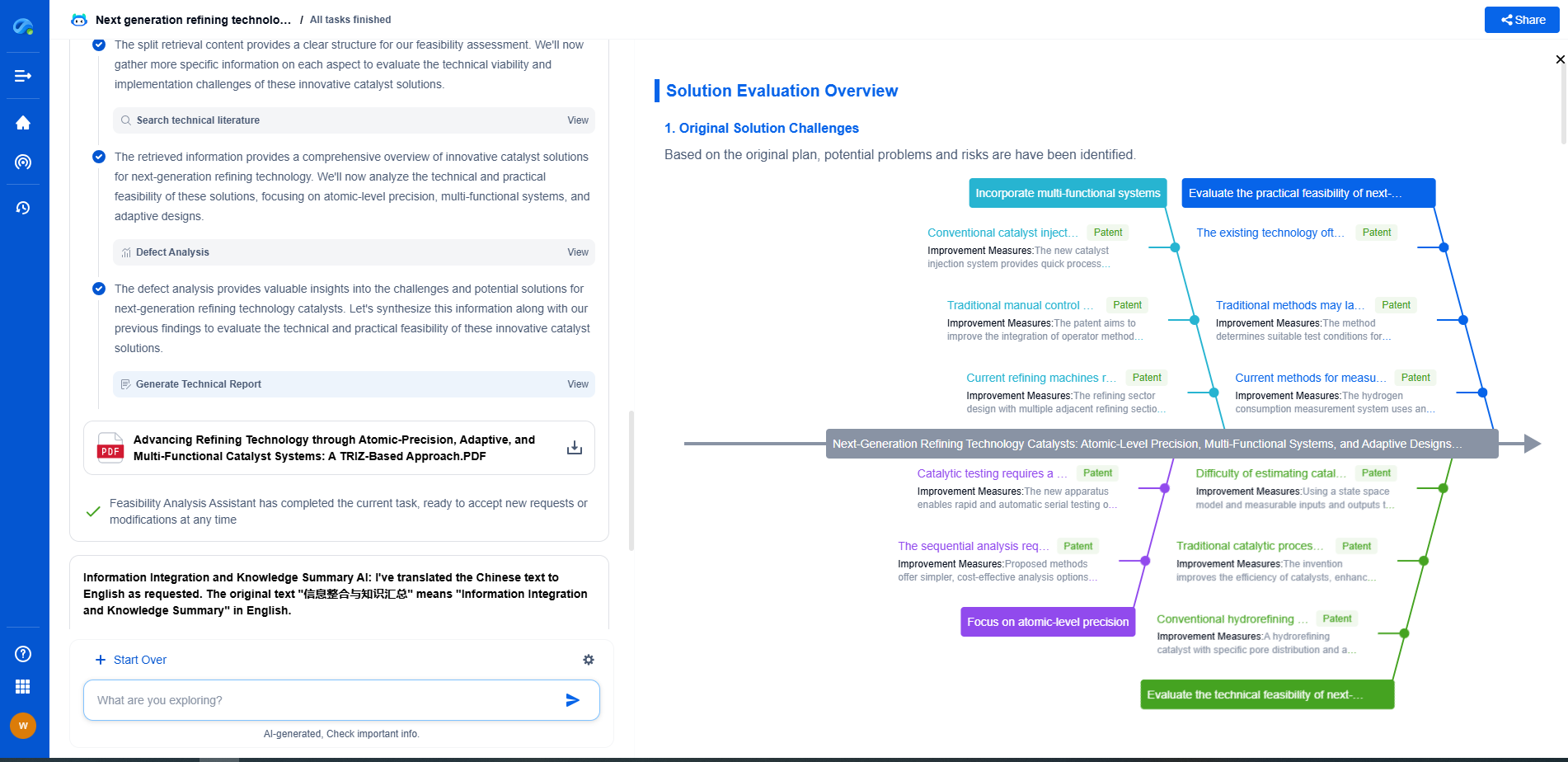Manual vs. Automatic Tool Changers: Speed, Cost & Reliability Compared
JUN 26, 2025 |
In the world of manufacturing and machining, tool changers play a pivotal role in enhancing efficiency and productivity. Whether you're running a small machine shop or overseeing a large-scale production facility, the choice between manual and automatic tool changers can significantly impact your operations. This article delves into a detailed comparison of these two types of tool changers, focusing on their speed, cost, and reliability.
Speed: The Race Against Time
One of the most critical factors in choosing between manual and automatic tool changers is speed. In high-volume production environments, time saved in tool changes can translate into significant cost savings and increased output.
1. Manual Tool Changers: Traditionally, manual tool changers require an operator to physically remove and replace tools. This process, while straightforward, is inherently slower due to the manual intervention required. Factors such as operator skill, tool accessibility, and setup complexity can further influence the time it takes to change tools manually. While manual tool changers may suffice for low-volume production or prototyping, they can become a bottleneck in more demanding scenarios.
2. Automatic Tool Changers: In contrast, automatic tool changers are designed to perform tool changes with minimal human intervention. These systems use sophisticated mechanisms to quickly swap out tools, often in a matter of seconds. The speed advantage is particularly evident in CNC (Computer Numerical Control) machines, where automatic tool changers can seamlessly integrate with machining processes, ensuring that downtime is minimized and production flows smoothly.
Cost: Weighing Initial Investment and Operational Expenses
Cost is another crucial consideration for businesses deciding between manual and automatic tool changers. The initial investment and ongoing operational costs vary significantly between the two options.
1. Manual Tool Changers: These are generally more cost-effective upfront, as they do not require the complex mechanisms and programming that automatic systems entail. For small shops or operations with limited budgets, manual tool changers present an attractive proposition. However, it's essential to consider the long-term costs associated with manual systems, such as increased labor expenses and potential delays in production.
2. Automatic Tool Changers: While automatic tool changers involve a higher initial investment, they can offer substantial savings over time. By reducing the need for manual labor and increasing production efficiency, these systems can offset their initial costs. Moreover, the enhanced precision and consistency they provide can lead to better-quality products and reduced waste, further justifying the expenditure.
Reliability: Ensuring Consistent Performance
Reliability is paramount in any production environment. Both manual and automatic tool changers have their strengths and weaknesses in this regard.
1. Manual Tool Changers: These systems are generally simple and robust, with fewer components that can fail. As a result, they often require less maintenance and have a lower risk of technical issues. However, their reliability heavily depends on the operator's skill and experience. Human error can lead to tool misalignment or damage, affecting the overall reliability of the machining process.
2. Automatic Tool Changers: These systems are engineered for precision and consistency, which can enhance reliability in high-volume production. However, their complexity makes them more susceptible to mechanical failures and programming errors. Regular maintenance and a skilled workforce to handle troubleshooting are essential to ensure consistent performance. Despite these challenges, automatic tool changers often provide superior reliability when properly managed.
Conclusion: Making the Right Choice
The decision between manual and automatic tool changers ultimately depends on your specific operational needs and budget constraints. Manual tool changers offer simplicity and lower initial costs, making them suitable for smaller operations or those with limited tool change requirements. On the other hand, automatic tool changers provide speed, efficiency, and precision, proving invaluable in high-volume and precision-focused environments.
Consider your production goals, budget, and the level of human intervention your operations can accommodate when making your choice. By thoroughly examining the speed, cost, and reliability of each option, you can make an informed decision that aligns with your business objectives and positions you for success in an increasingly competitive market.
Ready to Redefine Your Robotics R&D Workflow?
Whether you're designing next-generation robotic arms, optimizing manipulator kinematics, or mining patent data for innovation insights, Patsnap Eureka, our cutting-edge AI assistant, is built for R&D and IP professionals in high-tech industries, is built to accelerate every step of your journey.
No more getting buried in thousands of documents or wasting time on repetitive technical analysis. Our AI Agent helps R&D and IP teams in high-tech enterprises save hundreds of hours, reduce risk of oversight, and move from concept to prototype faster than ever before.
👉 Experience how AI can revolutionize your robotics innovation cycle. Explore Patsnap Eureka today and see the difference.
- R&D
- Intellectual Property
- Life Sciences
- Materials
- Tech Scout
- Unparalleled Data Quality
- Higher Quality Content
- 60% Fewer Hallucinations
Browse by: Latest US Patents, China's latest patents, Technical Efficacy Thesaurus, Application Domain, Technology Topic, Popular Technical Reports.
© 2025 PatSnap. All rights reserved.Legal|Privacy policy|Modern Slavery Act Transparency Statement|Sitemap|About US| Contact US: help@patsnap.com

